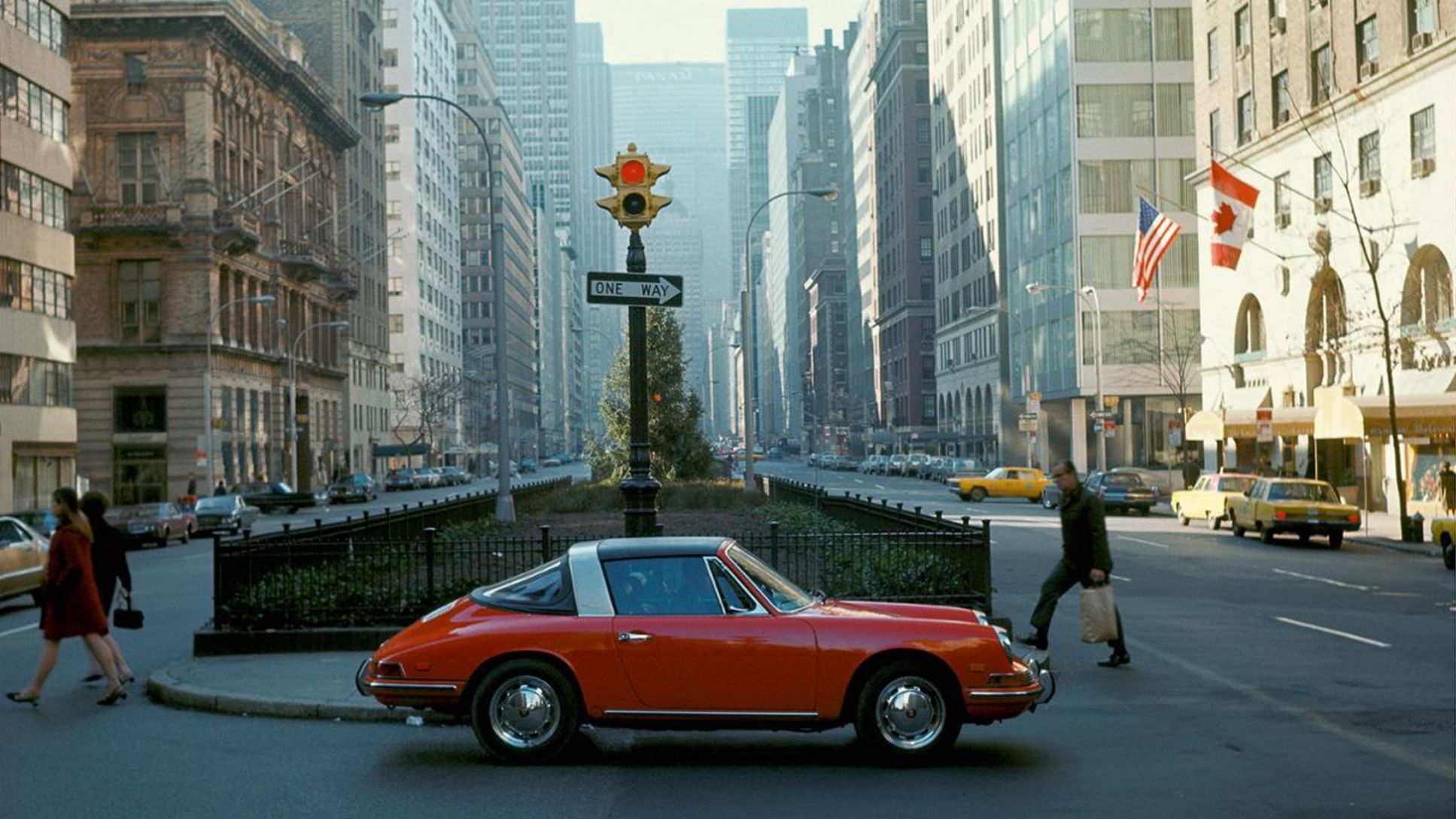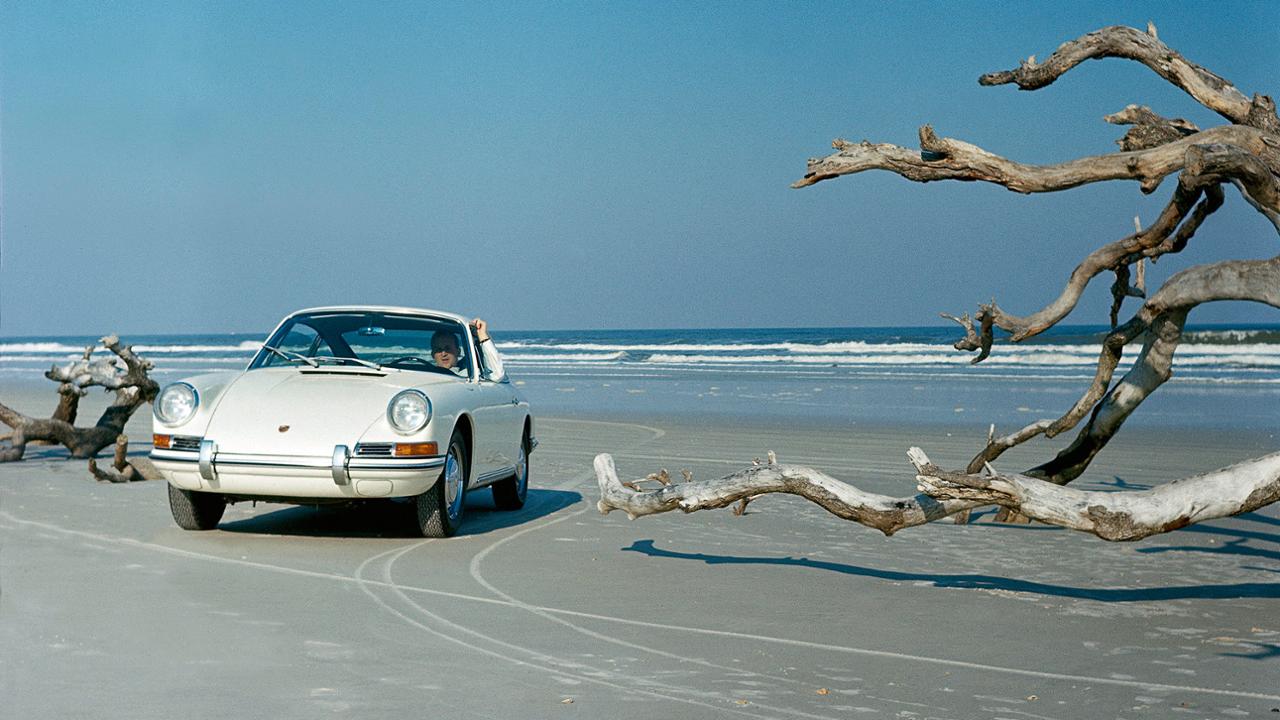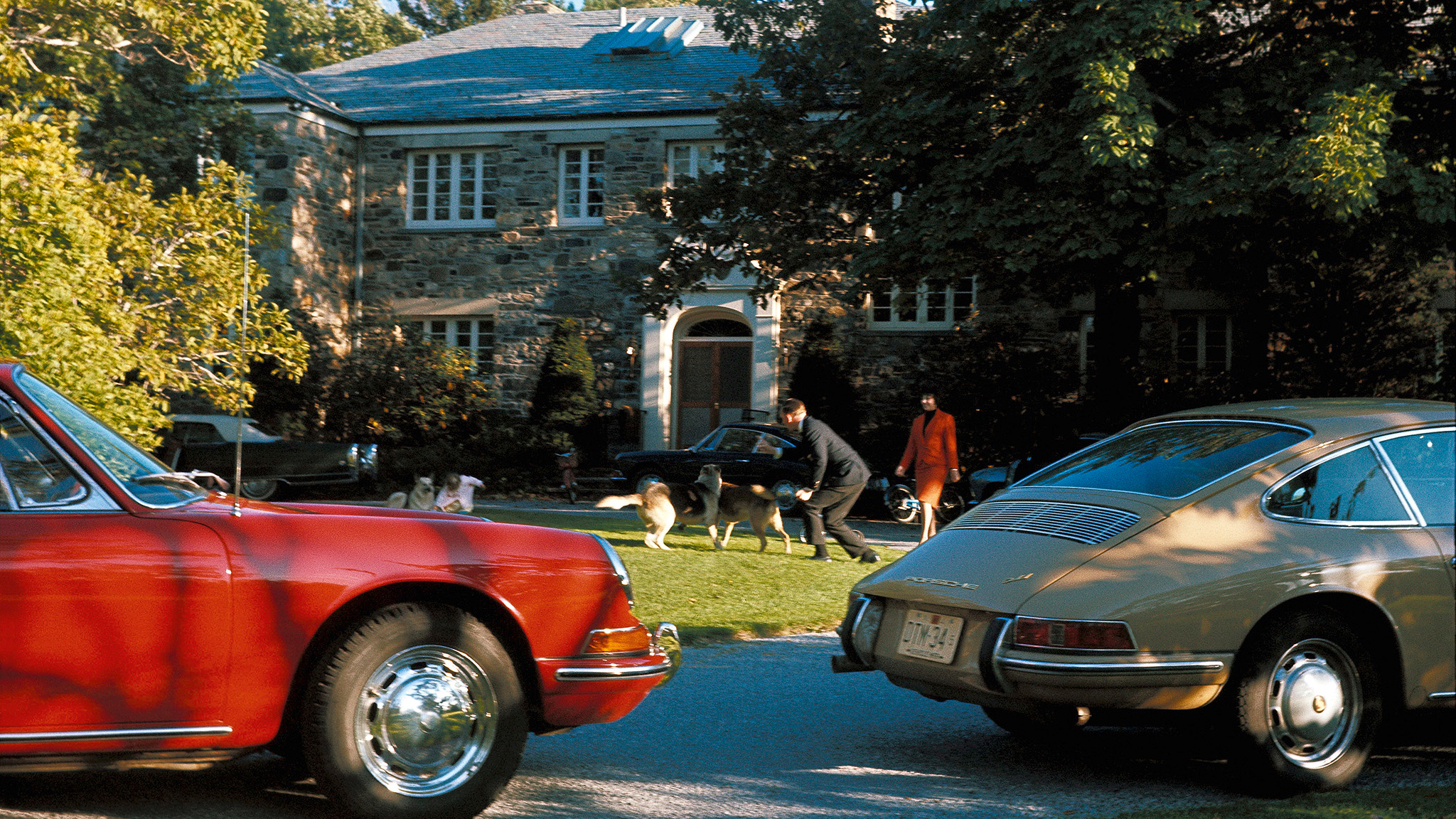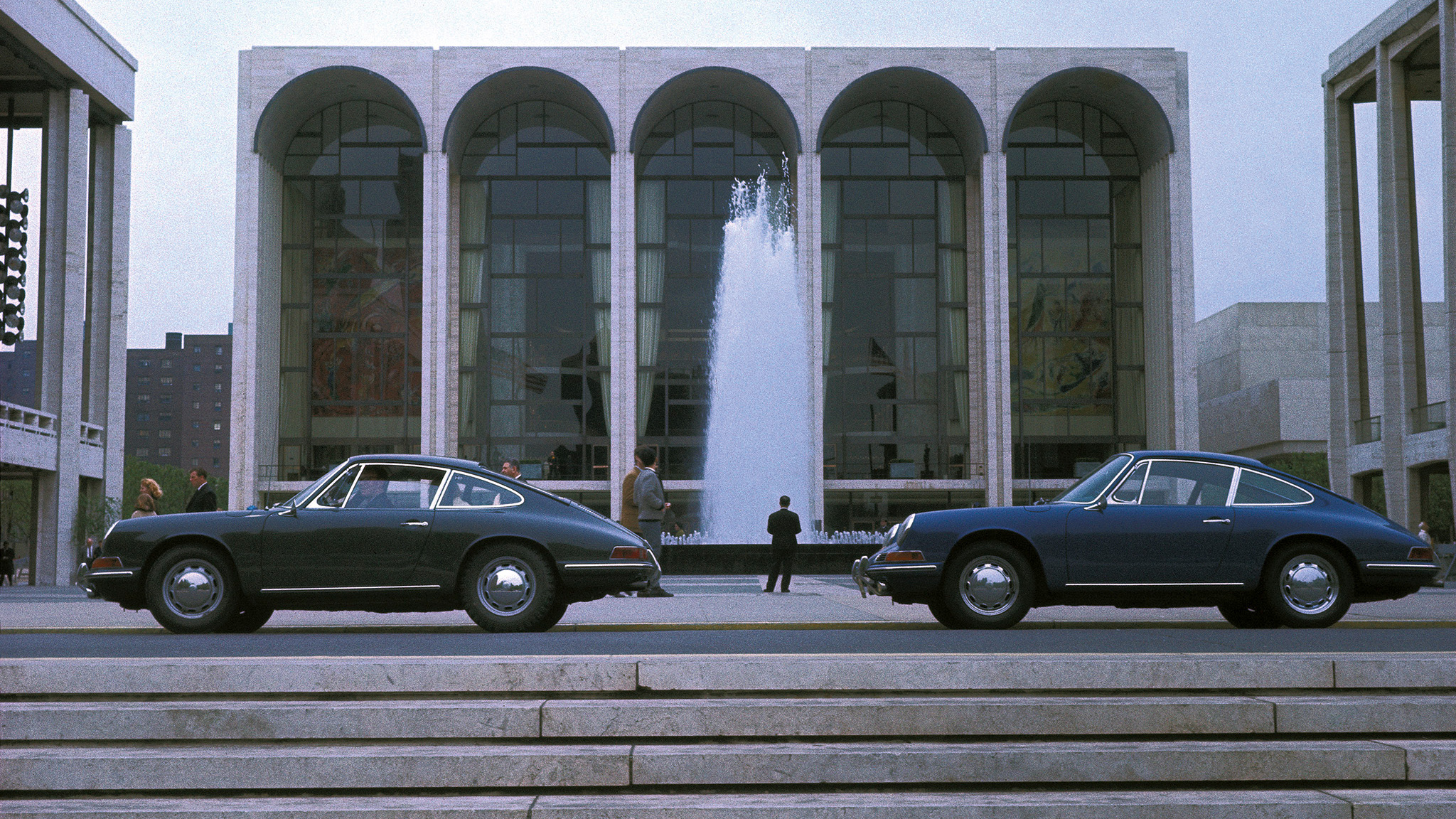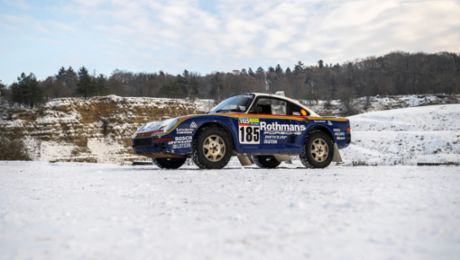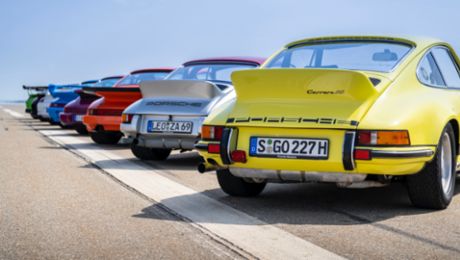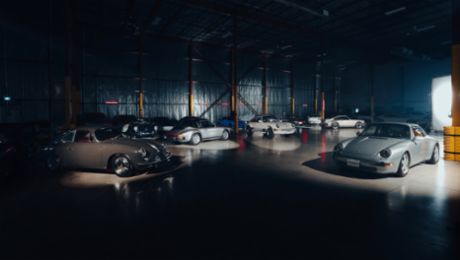“New York impressed me immensely back then. – Watching the sun set over Manhattan was incredible.” Ed Peter
When he had a few hours off in New York, Ed Peter liked to go to the other side of the East River. There, in Brooklyn, he stopped on a hill above the port facilities and parked his car on a terrace. “Watching the sun set over Manhattan was incredible,” he said more than 50 years later at his home on the Killesberg in Stuttgart, where he lived with his wife.
Ed Peter worked at Porsche from Monday to Saturday, starting in the mid-1960s as the person responsible for the US market and later for the entire overseas region. But on Sundays there was time for his second great passion. The Stuttgart native would then roam through the street canyons and suburbs of 1960s and 70s New York in a Porsche and with a camera. “New York impressed me immensely back then,” he said. “It was overwhelming because everyone was so open and you could talk to anyone.”
And everyone wanted to talk to this tall man, who simply parked his Porsche somewhere in the middle of the metropolis, pulled out his camera, an Edixa, and started shooting. “That wasn't a problem at all in New York back then,” he recalled. “I just had to shoot fast because people just flocked to the cars.” The Porsche models stood out among the angular, wide street cruisers and Peter enjoyed the attention. "They always asked, 'What fantastic car is this?' Some people didn't even know then that Porsche existed.”
Language as the key
Peter, who was born Erdhardt Michael Peter in 1931, came to Porsche in 1964 – literally. He was unhappy in his job at another car manufacturer, and so he set off for Porsche and asked for the sales manager at the time. The sales manager wanted to know whether he spoke English well. Peter, who at the time played a lot of basketball against the Americans stationed in Stuttgart, answered in English, refined with an American accent. “That really impressed him,” said Peter. A little later Peter became assistant to the export manager, and two years after that he was given the responsibility for the US market.
Peter had already discovered photography in the 1950s. In 1957 he travelled to the Formula One race in Monte Carlo alongside the famous motorsport photographer, Julius Weitmann. “Back then, we were speeding around the race track in such huge boxes. There were no crash barriers at that time either.” Peter subsequently made even more ambitious attempts as a photographer – almost always with cars in front of his lens. He learned his trade, refined his art. Today, however, it is very important for Peter to emphasise that photography has always been a hobby for him. But this passion took up almost his entire spare time, at least in the US.
Police officers as Porsche fans
Sunday was his shooting day. This was the day that he would drive to the Hudson River on the New Jersey side or to Harlem in the morning. On the Hudson River he had to deal with the police if he had again not parked his car correctly in order to get the perfect picture. “But the police were always friendly, my Porsche always helped me in that respect,” he said. In Harlem, he himself was amazed at the people who “went on pilgrimage to church all dressed up – that was incredibly impressive.”
However, it was his cars that made it into his photos most of the time. In his lifetime, Peter has probably shown off thousands of Porsche cars to their best advantage, preferably a 911 Cabrio or Targa. He never had a favourite angle, or a favourite part of the design classics. “A Porsche is beautiful all over," he said. "It's all a matter of looking – and I've always photographed intuitively.” It was important to him that the car fitted in with its surroundings. “The great thing back then in New York was that the cars and the architecture fitted so well together,” Peter said when he spread out photos from that time on his dining table. “Somehow it looks like they were taken yesterday – if I didn't know any better.”
Time travel with icons
In fact, sometimes it's just the few other cars that 'disturb' the illusion of a completely timeless work. But time travel usually works: the iconic shape of the 911, the New York cityscape still largely preserved today – Peter’s photographs are intuitive snapshots of a timeless place, yet they are documents from a time that will never come again. Fifth Avenue, a Porsche in the foreground, behind it the asphalt ribbon winds like a river through the street canyon, no signs of a metropolis. The lake lies still, only Ed Peter presses the shutter release.
Peter never photographed as much as he did during his time in the US. In the 1970s he returned to Germany, became division manager of sales and export, and retired in 1993. In the same year he was tournament director of several Porsche tennis tournaments and was active as a motorsport official in the FIA and DTM for almost 50 years.
Only his wife, whom he met in 1958, and his photographs were with him longer. At some point he digitised tens of thousands of slides and stored them on his computer. Together with many photo books and some photographs in the Porsche archive, they are his artistic legacy. Ed Peter never made much of a fuss about his photos. “Most of the photos didn't leave my apartment," he said. "They were my personal diary." A diary too beautiful not to be shown.
A few months after the interview, on June 16, 2019, Ed Peter passed away at the age of 87.
Info
Text first published in the magazine “Porsche Klassik”, special edition “8 generations 911”
Author: Frieder Pfeiffer
Photos: Ed Peter
Copyright: The image and sound published here is copyright by Dr. Ing. h.c. F. Porsche AG, Germany or other individuals. It is not to be reproduced wholly or in part without prior written permission of Dr. Ing. h.c. F. Porsche AG. Please contact newsroom@porsche.com for further information.
